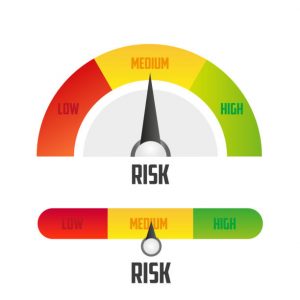Flood zones are areas of land that could be affected by floodwaters. Flood zones are not created equally. The Federal Emergency Management Agency (FEMA) has mapped floodplains in the United States, which can be found by looking at the FEMA Flood Map Service Center. These maps will show you what areas are most prone to flooding and how deep it is likely to get if a flood does occur.
When purchasing flood insurance, it’s important that you find out which zone your property falls into so that you know what type of coverage is best for you. There are several types of classifications from A-VZM, with Zones B through V being more susceptible to flooding than other areas on this list.
Flood Zone Risk Levels Explained
Understanding flood zones and flood risks are very important for identifying financial risk of buying a home in a certain area. If you are looking at buying a home in a flood zone, you should look into flood insurance so you will not have to pay for flood damage out of pocket.
High Risk Areas
Flooding is very possible in high-risk areas with there being a 25% chance of flooding during a 30-year mortgage. Flood insurance is required for all homeowners and businesses in these areas who have mortgages from federally insured or regulated lenders. These zones are marked with the letters A and V on flood maps.

Moderate/Low Risk Areas
The risk of flooding in areas with moderate to low risk is reduced, but not eliminated. Over 20% of the NFIP flood claims are given to these areas and a third of the disaster assistance from flooding. Although flood insurance is not required by federal law in low-to-moderate areas, it is highly recommended for all property owners as well as renters. These zones are marked on flood maps with the letters B or C, or X.

Undetermined Areas
These areas have not been subject to flood-hazard analyses, but there is still a flood risk. Flood insurance rates reflect uncertainty about the flood risk. On flood maps, these areas are labelled with the letter D.
Flood Zone Classifications Assigned By FEMA
Flood Zone A
These areas are susceptible to flooding by the 1 percent annual chance flood, or the 100 year flood, which are generally determined using approximate methodologies. There is not a detailed hydraulic analysis and, because of this, no flood depths are available. Mandatory flood insurance purchase requirements apply here and to all of the following areas labelled with A.
Flood Zone A1, A1-30
The 1 percent annual chance flood would affect these areas. This has been determined using detailed methods mentioned above.
Flood Zone AH
These areas are susceptible for shallow flooding by the 1 percent annual chance flood (usually areas of ponding) where average depths are between one and three feet.
Flood Zone AO
These areas are susceptible for shallow flooding by the 1 percent annual chance flood (usually sheet flow on sloping terrain) where average depths are between one and three feet.
Flood Zone AR
These areas result from the decertification of a previously accredited flood protection system. These areas are in the process of being restored to flood protection.
Flood Zone A99
These areas are susceptible to flooding by the 1 percent annual chance flood, but they will be protected upon completion of an under-construction Federal flood protection plan. These areas are considered special flood hazards because they have seen enough progress in the construction of flood protection systems, such as levees, dams, and dikes, that it can be considered complete for insurance rating purposes. Zone A99 can only be used if the flood protection system is making the required statutory progress towards completion.
Flood Zone V
These are areas along coasts susceptible to flooding by the 1 percent annual chance flood with additional hazards associated with storm-induced waves. Mandatory flood insurance requirements still apply in the zone labelled V.
Flood Zone VE, V1-30
These areas are susceptible to flooding by the 1 percent annual chance flood with additional hazards due to storm-induced velocity wave action.
There Are Some Flood Zones Outside of the SFHA
The Flood Insurance Rate Map also shows areas of moderate flood hazard, Zone B and Zone X. However, they are not included in the Special Flood Hazard Zone. These are areas with a minimal flood hazard but have an elevation higher than that of the 0.2 percent annual chance flood or the 500 year flood.
Conclusion
It’s important that you take the time to research which flood zone your property falls into as flood damage is one of the many hidden costs of home ownership. When purchasing insurance, it is essential that you get coverage for the specific type of flooding risk in your area so that if a natural disaster hits and there is damage to your home or business, you are covered. This will allow you to continue living comfortably while waiting for repairs on what used to be your home or place of work.
